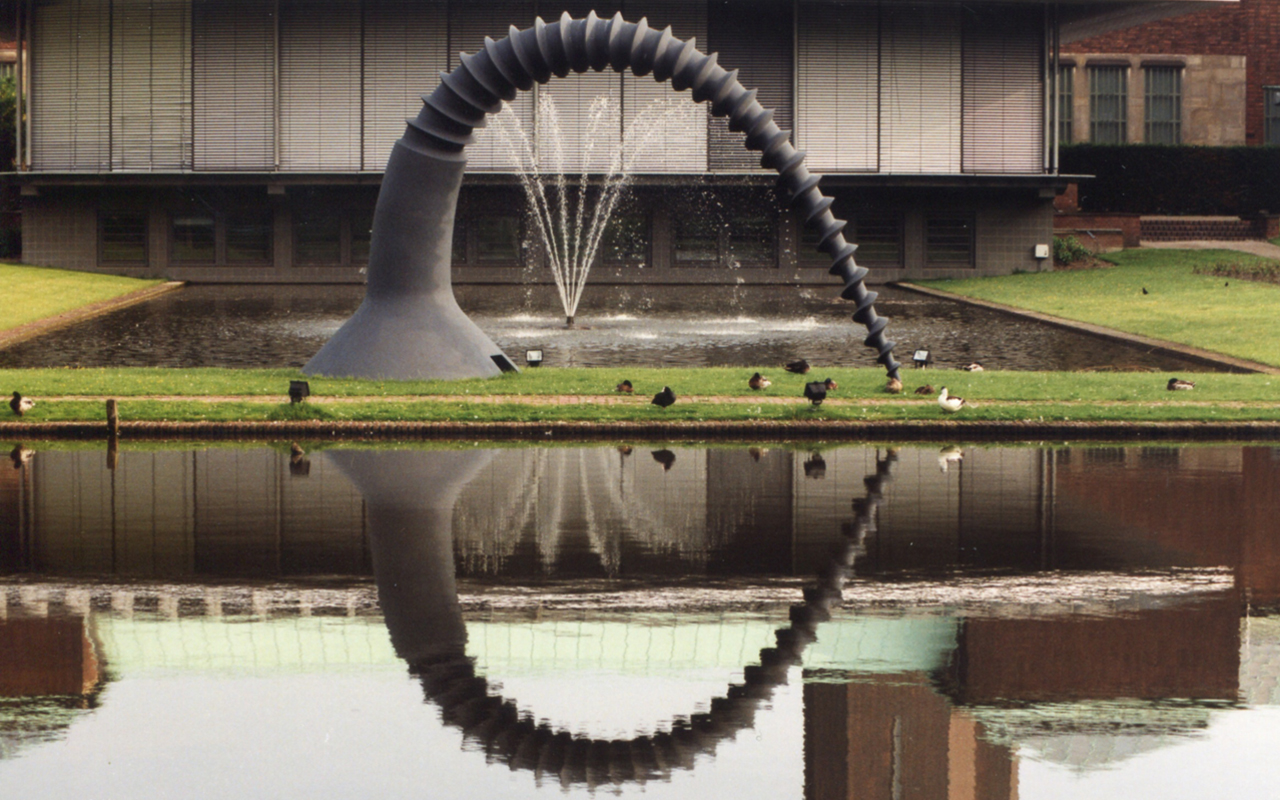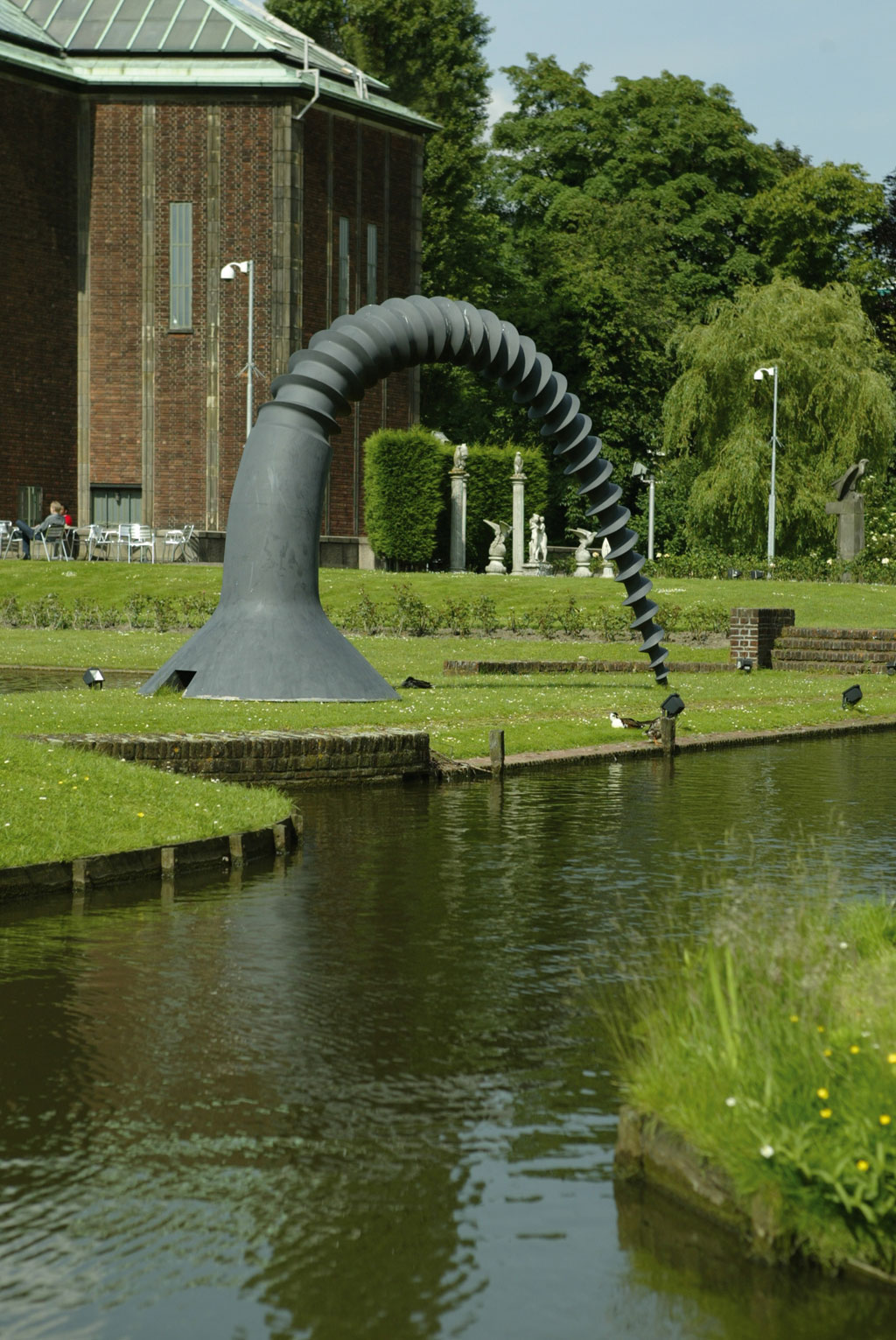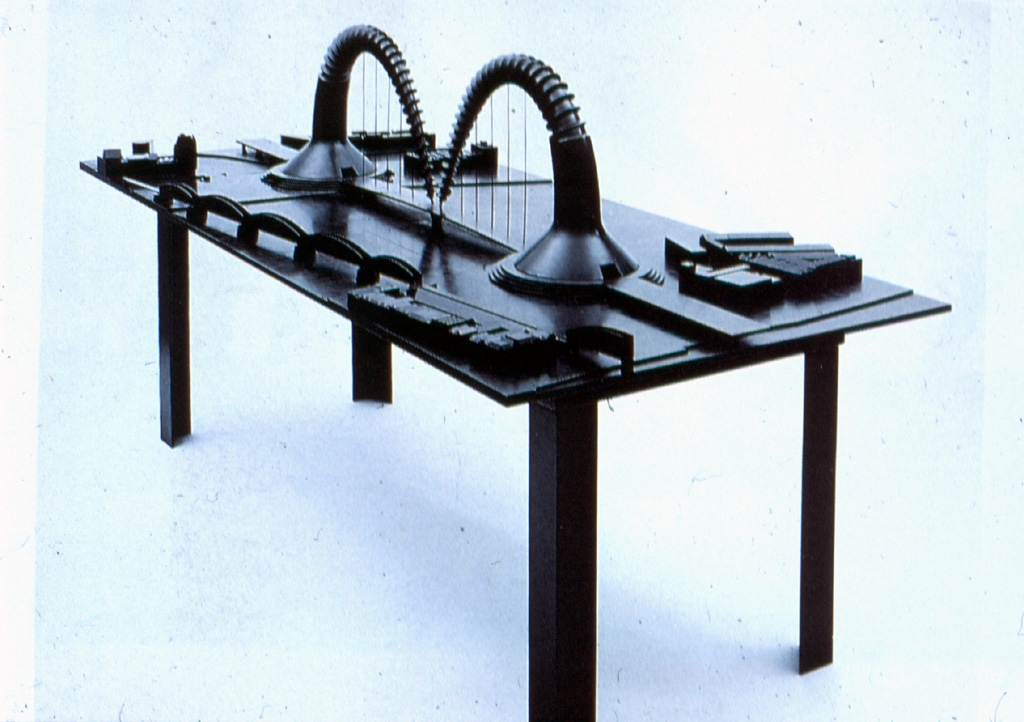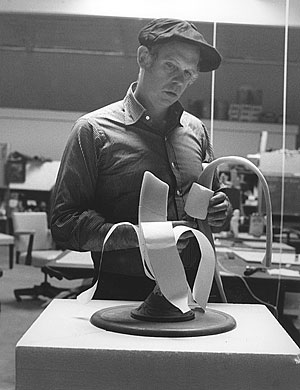The Artwork
Claes Oldenburg’s Screw Arch is in fact a design for a bridge. The idea for the bridge came about during the plans for a new Willemsbrug over the River Maas in Rotterdam. In 1978 the director of Museum Boijmans Van Beuningen, Wim Beeren, invited Oldenburg to make a model, an etching and a sculpture based on this idea. The Screw Arch project was completed in New York in 1982. In October of that year the colossal sculpture – produced in three sections – arrived by ship in Rotterdam together with seventeen working drawings, a model, three etchings and various photographs and other forms of documentation. The items were exhibited at the museum in the summer of 1983.
The Screw Arch consists of an arched aluminium screw approximately four metres high and seven metres long. The screw is arched as if it has collapsed under its own weight, but it remains recognisable as a screw. The tension of the arched form and its lifelike enlargement give the object an architectural yet playful quality.
It was initially the plan to exhibit the sculpture with its accompanying model and etchings for several months per year in Museum Boijmans Van Beuningen. The sculpture’s scale is related to the dimensions of the galleries in the Bodon wing. But when the sculpture arrived in Rotterdam it seemed more suitable to give it a permanent place in the museum’s sculpture garden. Oldenburg chose a site above the water, on a bank between the ponds, to remind viewers that the sculpture was originally intended to be a bridge. The sculpture is mirrored in the water; the sculpture and its reflection form a circle.



